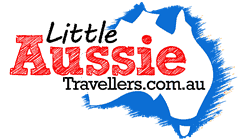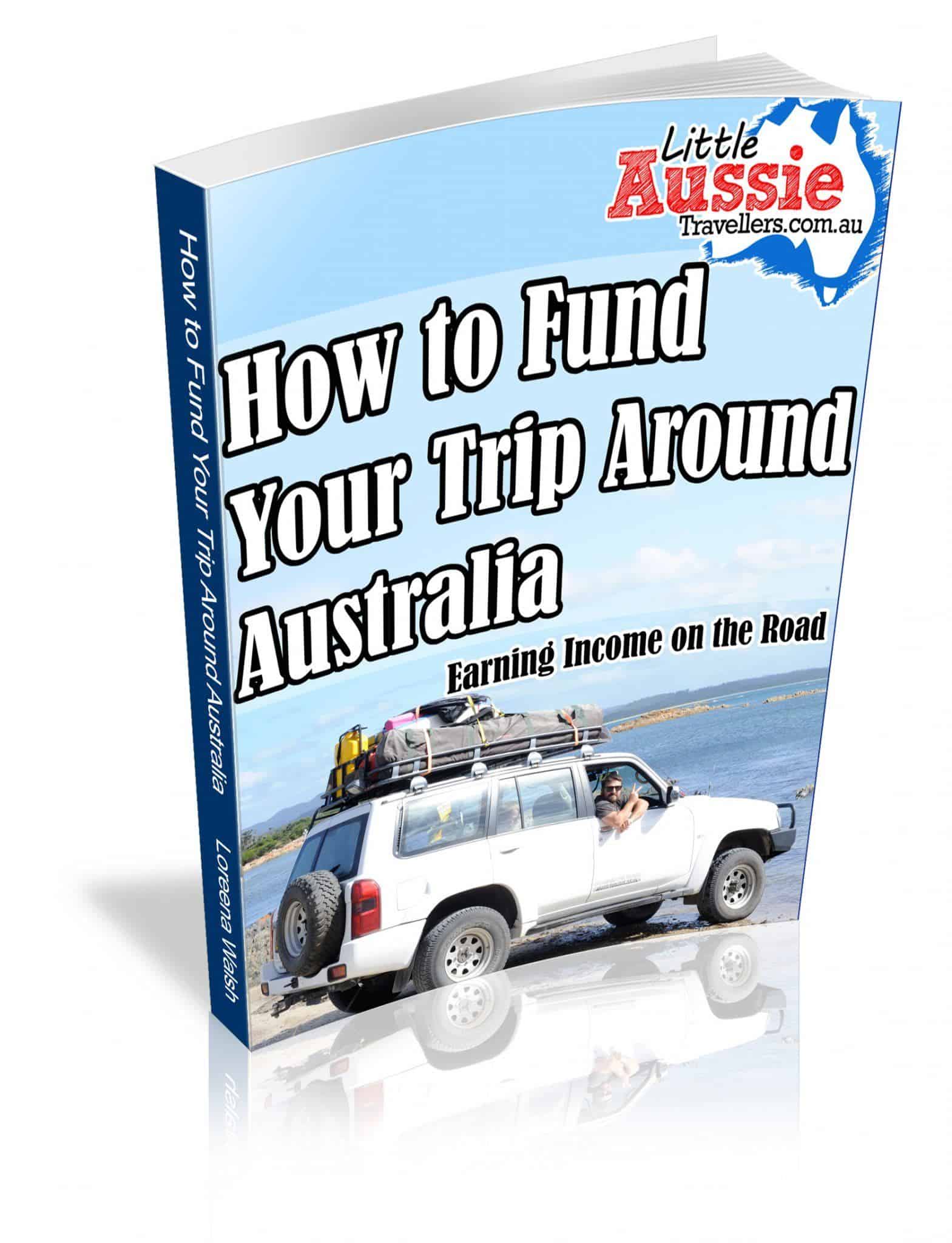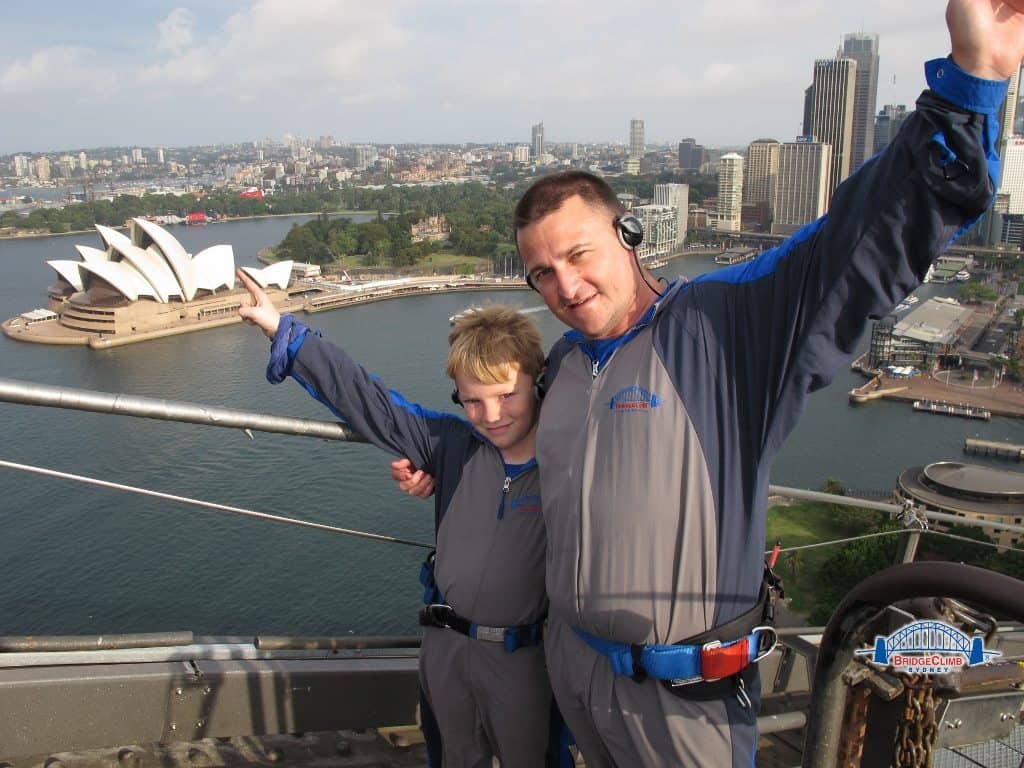
by Loreena Walsh | NSW Destinations & Activities, Slider Features
Sydney is a place that we hold near to our hearts. I (Loreena) was born in Sydney, and before having our children we lived in Sydney for a while, at the gorgeous Maroubra Beach. So it was with great excitement that we go to take part in experiencing some of the best family activities in Sydney recently and we get to share those experiences with you.
These family activities offer a range of fun for kids and adults of all ages, and cover a wide range of interests, so here’s four amazing things to do on your next Sydney holiday.
Surf Lessons on Bondi Beach with Let’s Go Surfing.
Not only is surfing as a family something fun to do, getting to experience the waves on the iconic Bondi Beach adds an entire dimension of excitement to this super cool experience. Let’s Go Surfing are the surfing experts in Bondi and they’ll have you standing up on a board in no time, feeling the exhilaration of mother nature.
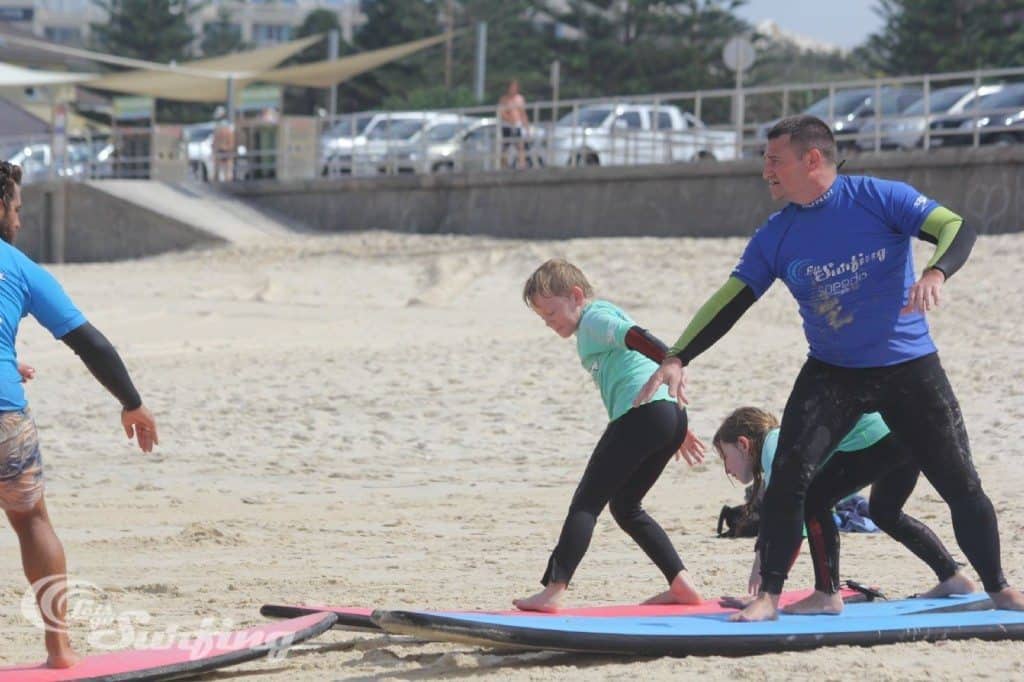

Bike Riding in Manly with Manly Bike Tours
Our kids love bike riding, but it wasn’t something I would have planned on doing as it had been a while since I’d ridden a bike. WOW I would have been missing out! Talk about fun, riding a bike with the kids along Manly esplanade was such a relaxing way to spend the afternoon and take in the stunning views that Manly has to offer. Manly Bike Tours have a range of bikes on offer, from tandem bikes, cruisers, kids bikes and the tag along bike, where, as you can see in the picture below attaches to the back of the adult bike allowing younger children to come along for the ride. Definitely a highly recommended Sydney activity for families
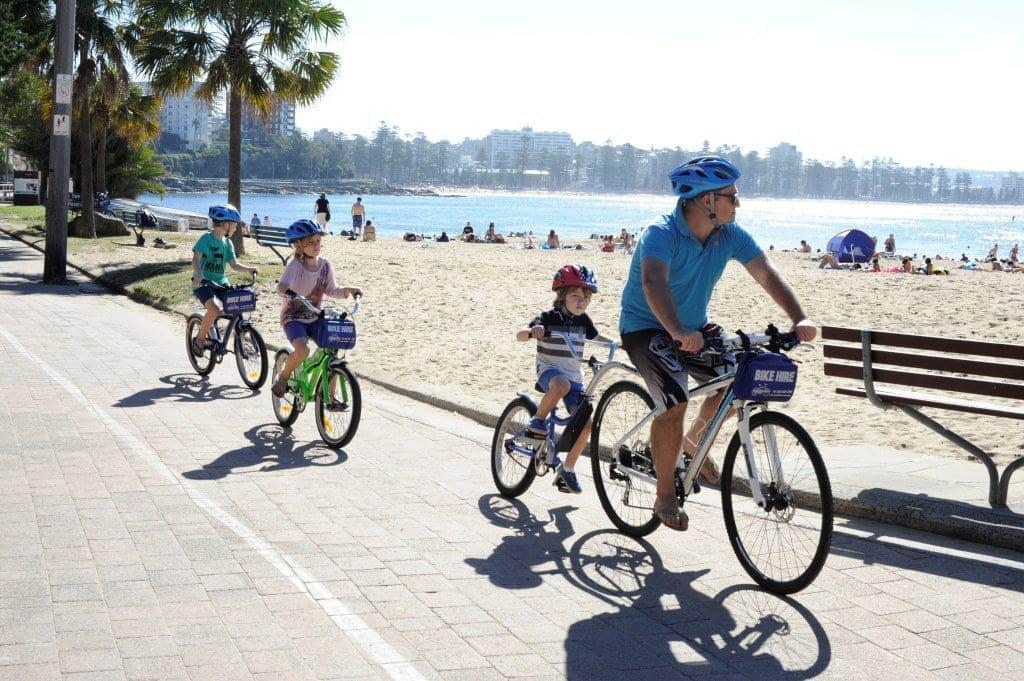
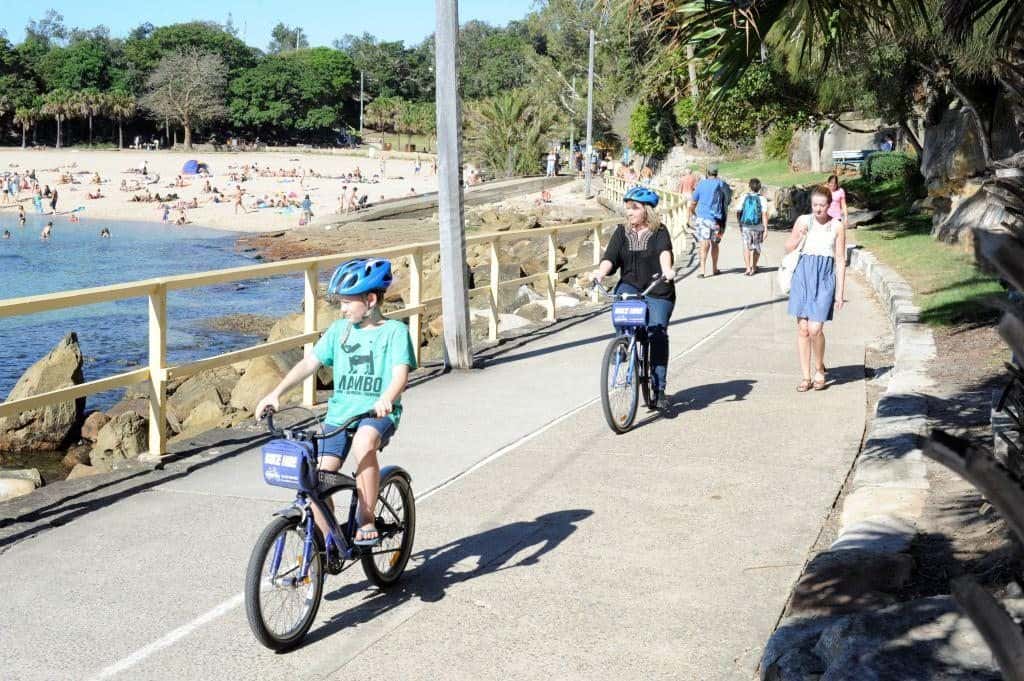
Taronga Zoo Family Day Out
Another one of the iconic things to do in Sydney, a visit to Taronga Zoo is a must. Be sure to allow yourself a full day to explore everything the zoo has to offer. The cable car at the zoo entrance offers a stunning view of the city skyline, including the Harbour Bridge and Opera House. The range of animals on offer for viewing at the zoo is amazing so close to the city, with everything from native Australian wildlife to exotic animals such as Orangutans, which are one of my favourites. There’s lots to be learned about conservation while you’re there, and children of all ages will be talking about their visit for days to come as our youngest was.
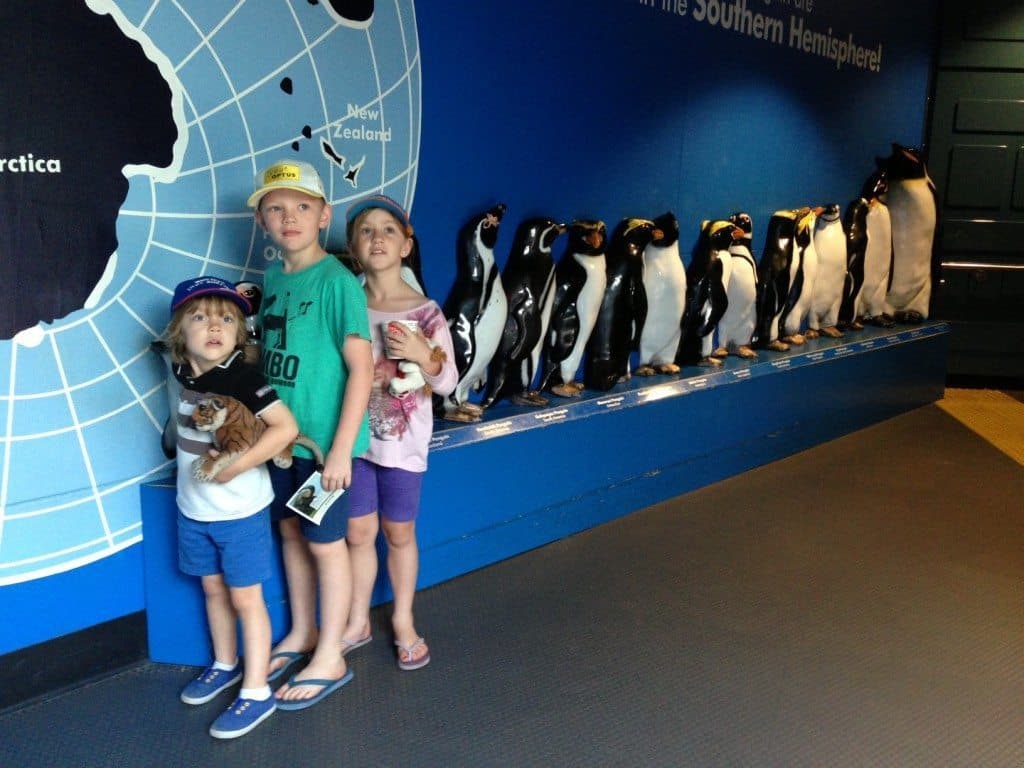
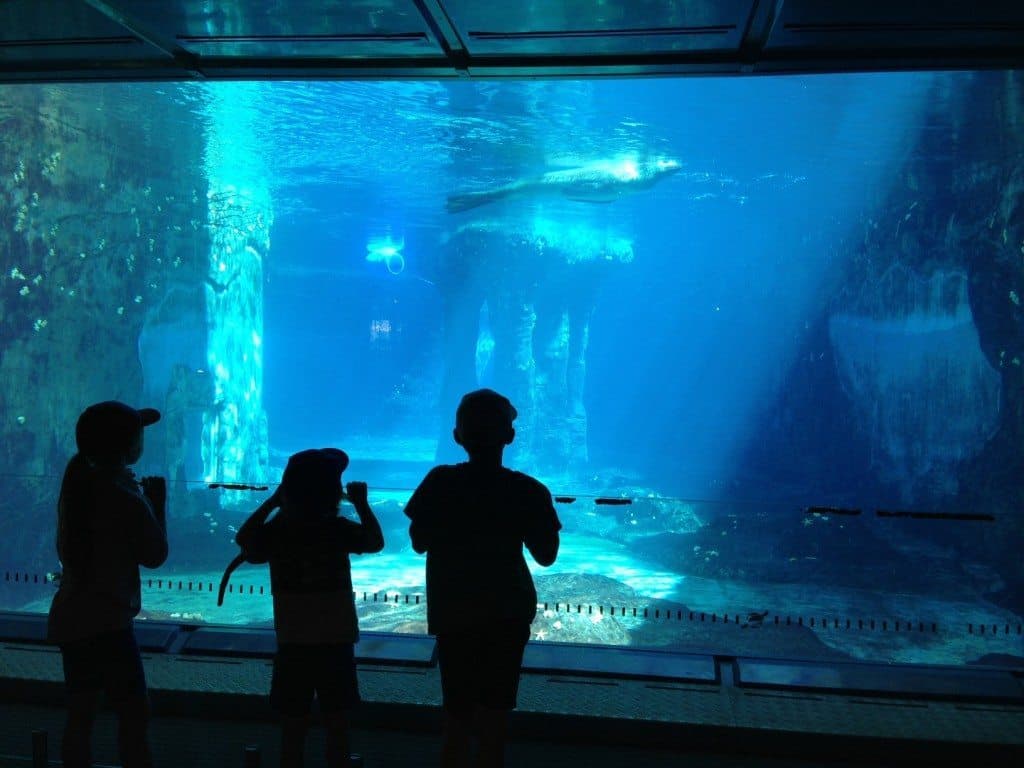
Sydney Bridge Climb – Father and Son Time
WOW, is the most common word that was used to explain the exhilaration of experiencing the Sydney Bridge Climb. With only Jackson being old enough to take part in this experience (children must be aged 10+), Matt and Jackson took the opportunity to have some father, son bonding time and it worked a treat. The smiles and excitement before and especially after they got to climb to the peak of the Harbour Bridge were so great I was left feeling a little envious! I’m glad we went in with them to see them off inside the building, as when we stepped in, we uncovered a museum that allowed all of us to discover the history of the bridge and some interactive experiences for the younger kids too.
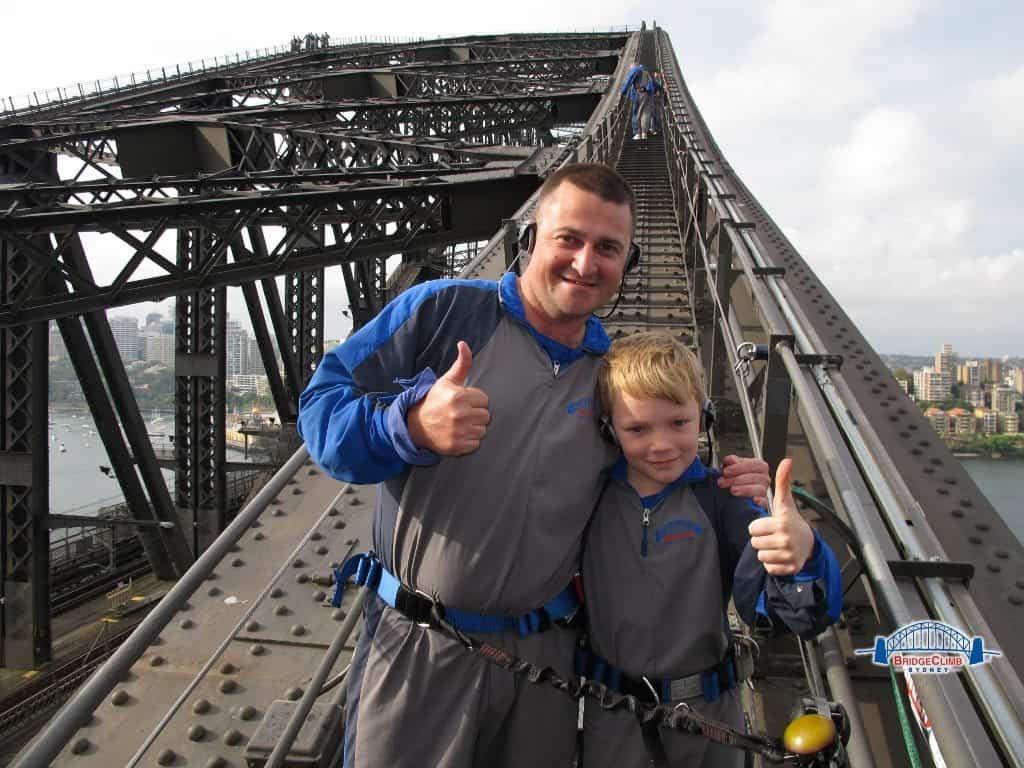

Put Yourself in the Picture
Destination NSW have come up with a really unique way to put yourself in the picture of some of the best family activities in Sydney. Simply head on over to Sydney 360 and upload a photo to see yourself doing some of the amazingly fun things Sydney has to offer. Take a look at Jackson Kayaking on the harbour below, and then create your own for a bit of fun! Jackson Kayaking on Sydney Harbour with Sydney 360.

Check out the our family fun in Sydney at Taronga Zoo.
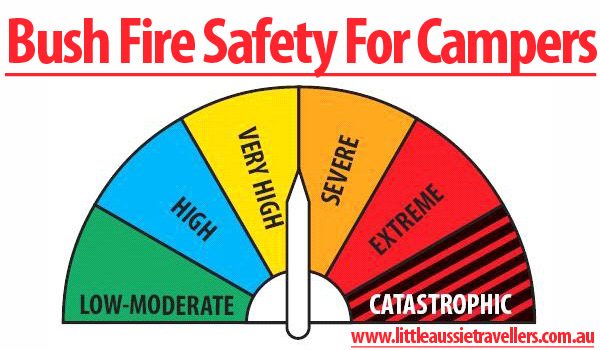
by Loreena Walsh | Camping, Slider Features
Australia has been in the grips of a heat wave in the past week or two with fire risk across the country. If you’re wanting to enjoy some family camping outdoors, then it’s super important that you understand the basics of bush fire safety for campers. With National Parks recently closed, and total fire bans across most of Australia, there have still been reports of travellers putting themselves in fire danger.
Camping during summer is great, but it’s important that you understand what to do if a fire threat occurs. It’s also important to know how to prevent starting an accidental fire at your campsite.
Bush Fire Safety Preparation For Campers
- Check for current fires: Using websites such as Landgate Fire Watch will help you track current fires burning in the areas you wish to camp in. They also list a range of other bushfire information services on their website below the current fire map.
- Be aware: While driving through the bush it pays to be aware of your surroundings. If you’re heading to a remote area or dry bush land and it’s a hot day, then the chances of a fire increase dramatically. Keep a look out for smoke, talk to rangers if you see them in camp areas or National Parks and check any signs that may reflect current fire danger risks.
- Carry suitable supplies: While singlets, shorts and swimmers are generally common camp gear, if you find yourself trapped in a bush fire area in the middle of summer, these clothing options will put your life in danger. Even in the hottest weather, you need to be prepared by carrying with you; long pants, a long sleeved shirt, hat and gloves made from natural fibres, along with glasses and boots. Wearing these items helps to protect your body from the deadly radiant heat that exists during a fire. Carrying a woollen blanket and plenty of water is also a great idea.
This may sound over the top, but the reality is, if you’re camping on hot days, in a region that has the possibility of being affected by fire, these items could save your life.
- Tell someone where you are going: If you’re heading off into bushland to camp, then let someone know exactly where you are going and for how long. In times of fire, communications can be cut from areas making it impossible for you to make contact in times of an emergency.
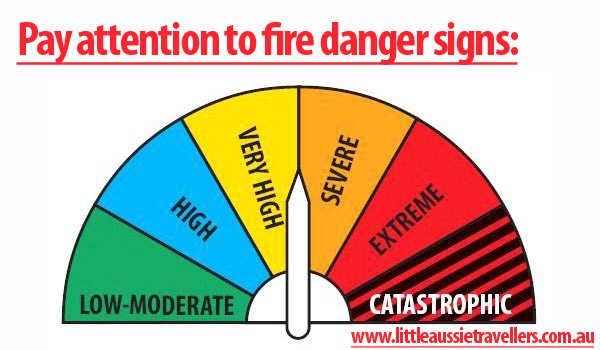
Basics of Bush Fire Safety For Campers.
- Is there a fire ban? It’s your responsibility when you’re camping to find out if there is a total fire ban in place. If there is, you will not be able to have a camp fire, or any naked flame. This needs to be taken very seriously, as it only takes one small mistake or disregard for the laws to cause major bush fires that threaten life and property. You can find fire ban details at the fire authority in your state.
- Preparing and lighting a camp fire: When you light your camp fire, make sure you do it in a cleared area or a dedicated fire pit. Do NOT place rocks around the edge of your camp fire as they can explode!
- Try to leave at least 3 metres between your fire and camp gear, and in a windy area try to keep the fire sheltered so not to blow embers onto bedding and supplies.
- Do not use liquid fuels such as fuel to start your fire. Use kindling and bunched paper instead.
- Safety Supplies: Have a fire extinguisher or water close by in case of emergency.
- Extinguish your camp fire correctly: Be sure to extinguish the fire correctly with water, ensuring that the entire fire is cool to the touch and well doused in water before you leave the area. It only takes a small amount of wind and a single ember to reignite a fire.
If You’re Caught In A Bush Fire While Camping
- Leave early: If the worst happens and you’re caught in a bushfire while camping, if it’s safe, the best thing you can do is leave early. If this means leaving some of your gear, and the fire is especially fierce, then just like people need to evacuate their homes, leaving gear behind could save your life. Stick to main roads and tracks to increase the chances you’ll be able to escape quickly and safely.
- Find a safe location: If you need to stay, then find a large open space, or already burned out area and stay there.
- Staying safe in your vehicle during a bush fire: If you need to stay in an area and fire is approaching and you’re in your vehicle, then park your vehicle off the road in a clearing as best you can. Turn your lights on, leave your engine running, if you can, make a clearing around the car, close all doors, windows and vents, get down as close to the floor as you can, and cover all exposed skin (preferably with a woolen blanket or natural fibre clothing). Drink plenty of water before the fire reaches your car, and stay down and under cover until the sounds of the fire have gone.
It is always safer not to be in a bush fire danger area, so travel smart and take care.
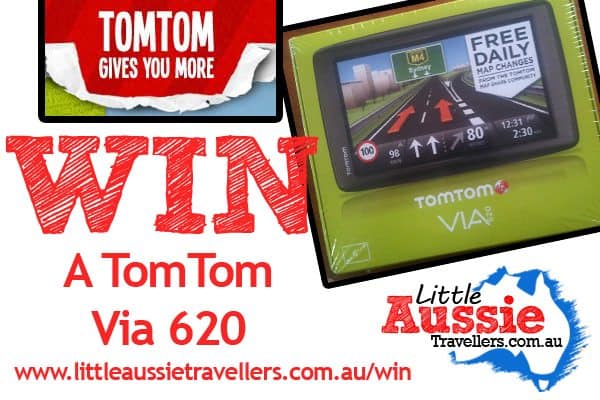
by Loreena Walsh | Slider Features, WIN
Welcome to 2013! What a great way to start the new year, with an awesome giveaway thanks to the team at TomTom.
Right now, they are running a competition that gives some lucky people the chance to win the road trip of a lifetime. So we’re going to let you know how to take part in their amazing competiton, plus give you the chance to win a TomTom Via 620 Navigator exclusively for Little Aussie Travellers readers.
Tom Tom Gives You More Competition: This global competition is lots of fun and offers you the chance to win great prizes every hour, as well as the road trip of a lifetime. The six main prizewinners will be sent on a two-week driving adventure for four people along one of these spectacular routes: Ruta 40 in Argentina; the Garden Route in South Africa; the Grand Alpine Tour in Europe; the Malaysian Roundabout; the Australian Coastal Route; or the Pacific Coast Highway in California. . We’ve tried it out and it’s lots of fun, so good luck! Enter the competition below to receive your Bonus points to help you unwrap prizes faster!
Little Aussie Travellers & Tom Tom Win a Navigator Competition:
To Enter:
This competition is now closed, winner will be announced soon, stay tuned for more competitions.

Terms & Conditions:
1. Be a liker to the Little Aussie Travellers facebook page as listed above.
2, Be a subscriber to the Little Aussie Travellers Newsletter (takes place automatically during entry) but you must confirm via the link in your confirmation email.
3. Answer the question asked above in 50 words or less, most creative answer wins.
4. Entry is open to residents of Australia aged 18+
5. Winners are judged on the skill and creativity of their answer. Winners will be chosen at the discretion of Little Aussie Travellers and TomTom, no further correspondence will be entered into.
6. All prizes are posted by Australia Post in good faith and will not be replaced if they go missing or are damaged in transit.
7. Entry opens January 1st 2013 and closes on January 15th 11:59pm aedst
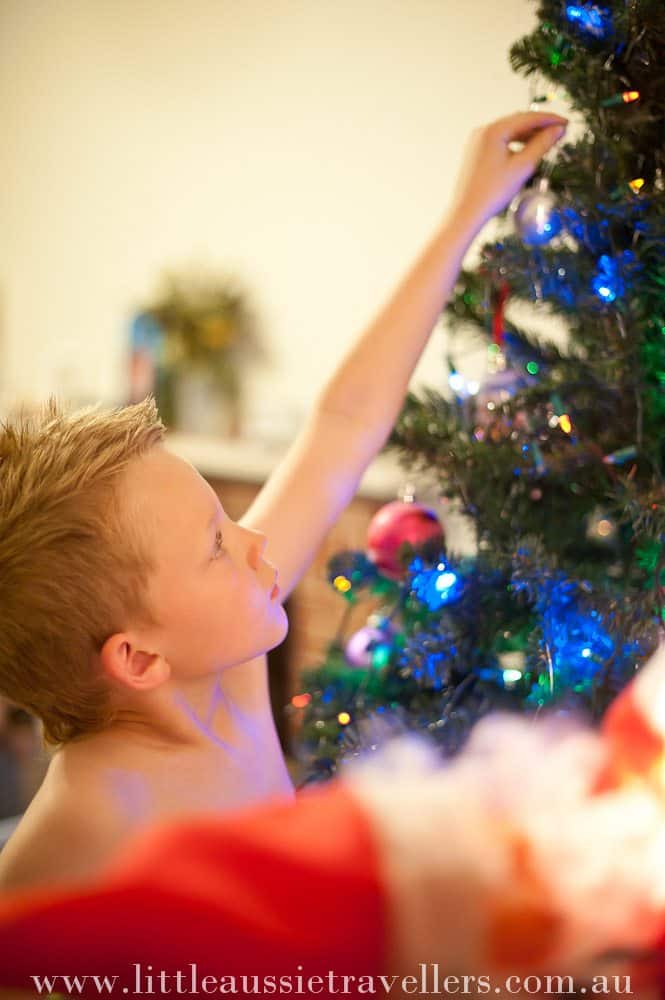
by Loreena Walsh | Family Travel, Slider Features
Today is officially “put up the Christmas tree day”, one of the most exciting days of the year for the kiddies.
It’s been weighing on our minds this year about what to get the kids for Christmas. Seeing as we’ll be living in a caravan next year, there’s only a limited amount of “stuff” that can logically fit on our Christmas lists.
We think we have it all figured out though, and today, it was time for the kids to pull out the box of decorations and the tree, and get to work making the house Christmas-y!
It’s strange to think that next year we won’t have a house, or a tree this size, and it’s all a bit of unknown just where we’ll be next year for Christmas. It’s the kind of unknown that’s exciting, but also the kind of unknown that makes me stop and appreciate this special Christmas, this time together before we head off on our big adventure.
So to get you all in the Christmas spirit, here’s the unveiling of the tree 🙂
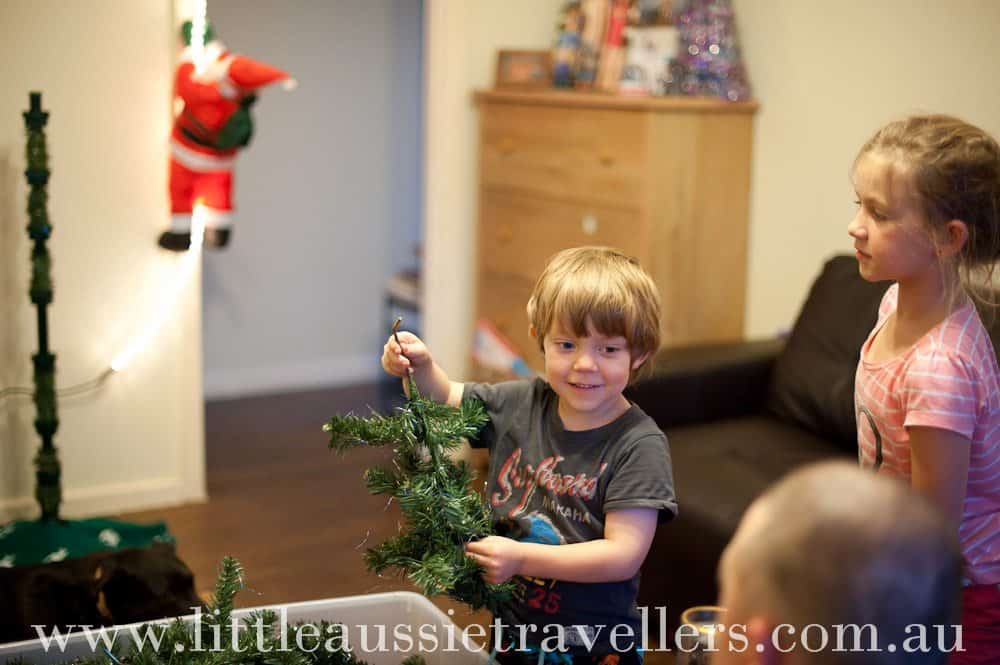
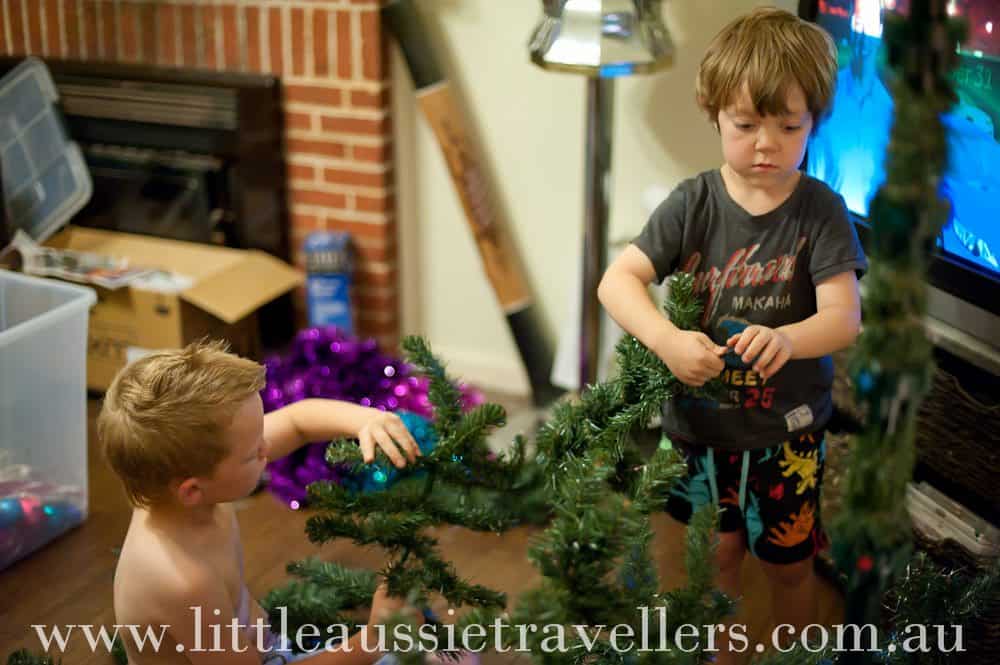
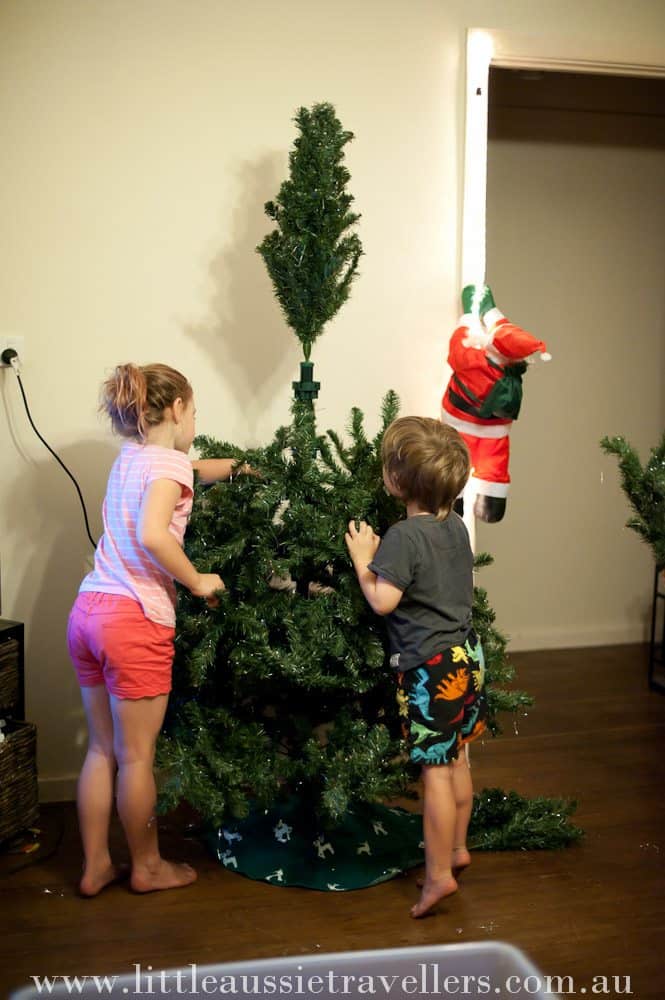
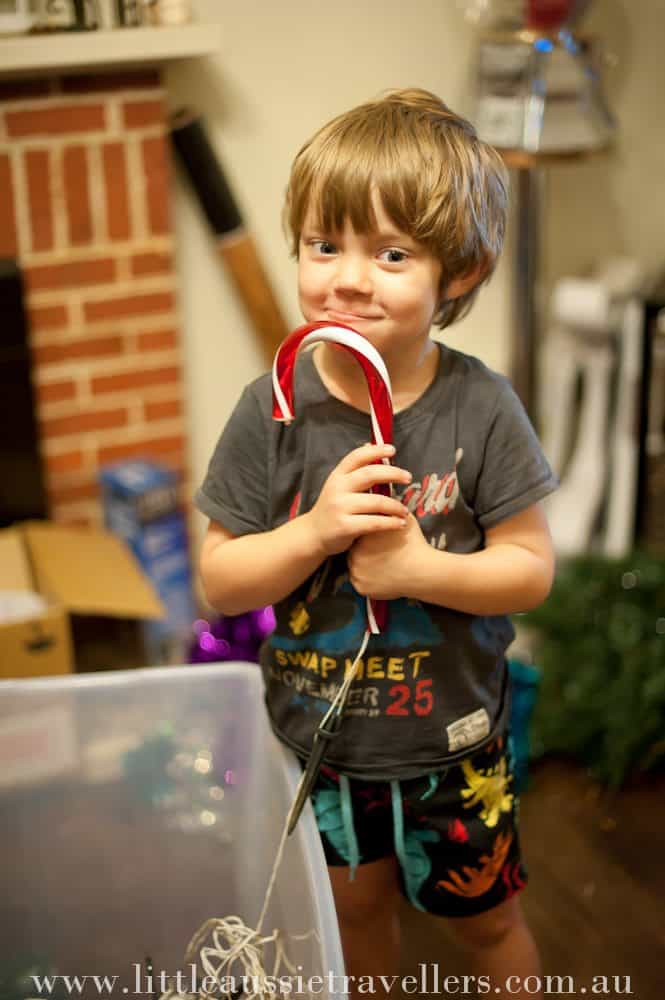
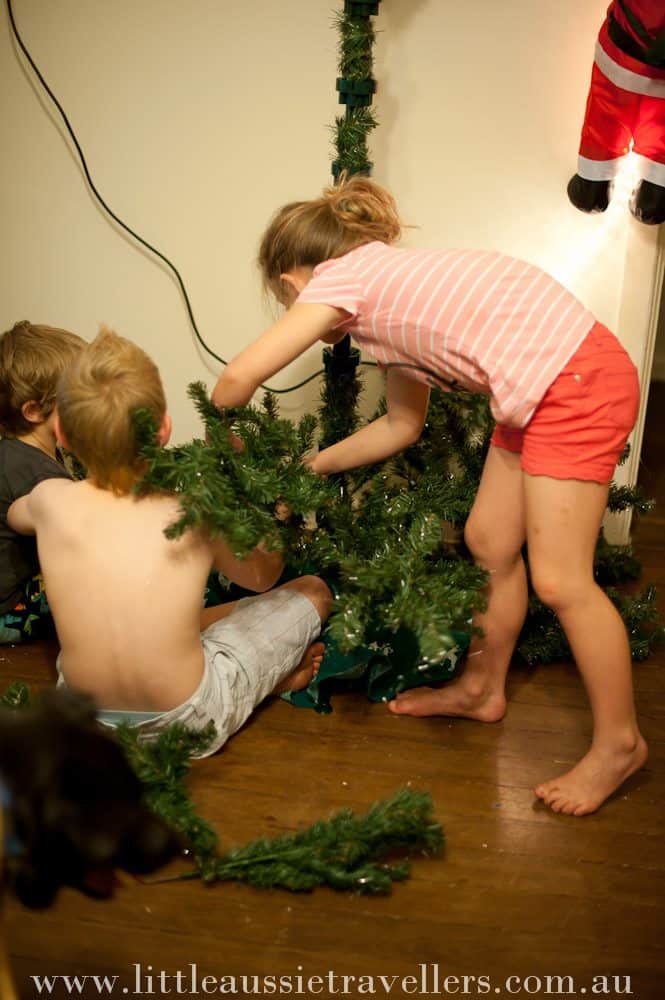


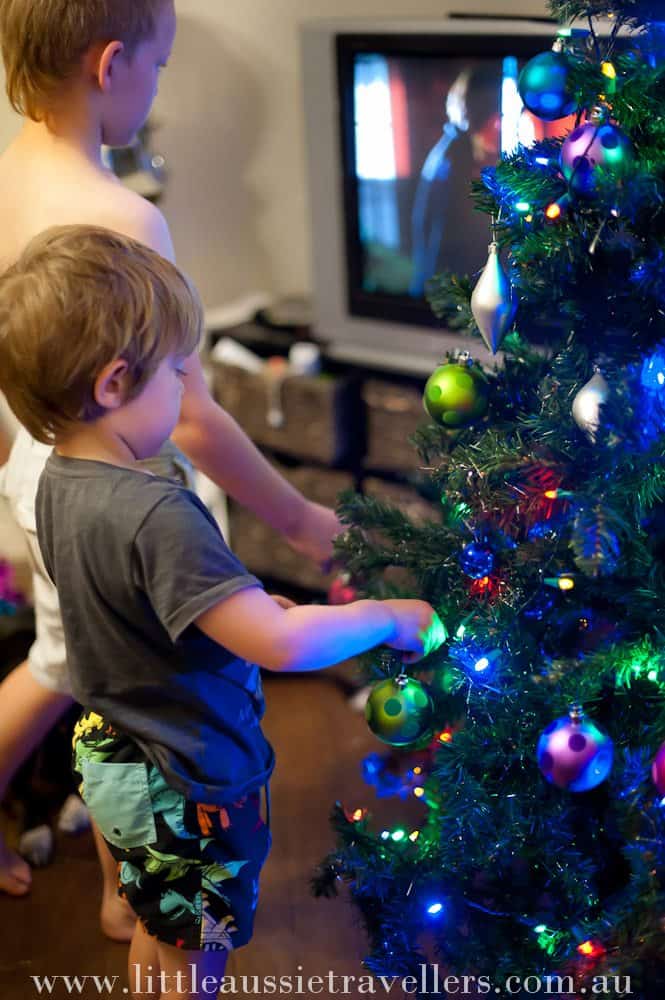

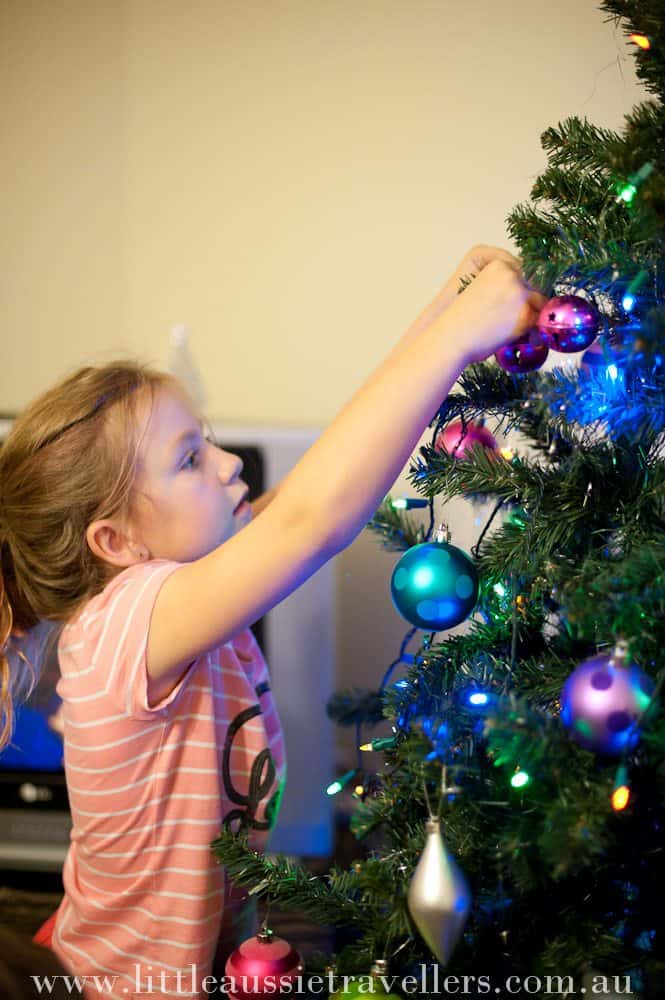

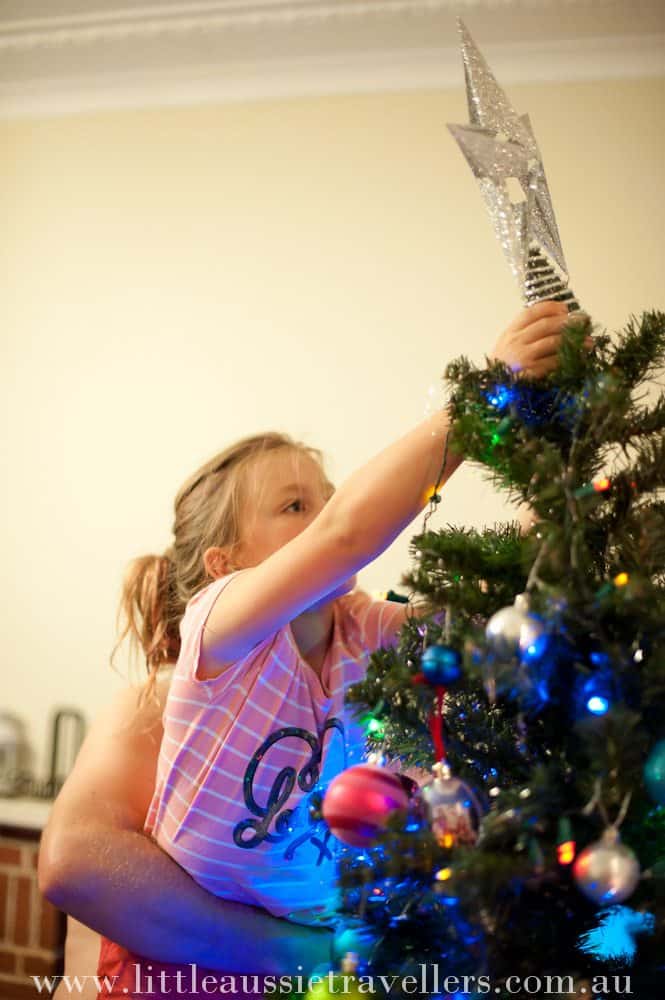

by Loreena Walsh | Slider Features
I fear, that soon, I’ll be standing naked for all the world to see, and what’s left of me, may not be what I thought was there.
As each box, bag and item is sold or donated, or thrown away, the searing reality of what we’re doing starts to fill my thoughts.
There’s 30 years of excruciating pain, and undying love behind us, and in each of the possessions we own, those experiences still breathe. Now, we’re sending them out the door, and our experiences will breathe and live only within us, our hearts, each other.
I wish we were all stripped back, stripped bare and standing naked in front of one another. Not in a literal sense obviously, but I guess, so that we can share that raw, amazing essence that truly defines the human spirit.
Simplicity Is Lost:
 My brother lives next to an 80 year old man. Some of the crap in society thought it would be a good idea to violate this elderly man’s home in the hope of gaining a few dollars. Thankfully he was not home at the time, and so the scum came and left without any real incident except a broken window latch that proved they were there.
My brother lives next to an 80 year old man. Some of the crap in society thought it would be a good idea to violate this elderly man’s home in the hope of gaining a few dollars. Thankfully he was not home at the time, and so the scum came and left without any real incident except a broken window latch that proved they were there.
As my brother took his phone number next door to offer the gentleman some sense of safety net if anyone should try something similar while he is at home, the 80 year old walked my brother through to show him exactly what these idots had done. They’d been looking for money, shuffled through his sewing kit he keeps at the top of his wardrobe in his bedroom. He couldn’t however understand why they didn’t steal his tv (a small 34cm), or any of his wirelesses he has in each room of his house to listen to the radio.
My brother said his heart felt a little broken, that this elderly man stood there, vulnerable, with his simple belongings, living his simple life, and these bastards had ruined this mans sense of safety within his own home all for the sake of nothing. This mans pride in his belongings that were looked down on even by theives for their simplicity. It was however, that simplicity which had served the man well in his 80 years, and perhaps made him a more secure man than those of our generation searching for larger, flashier, better, options.
The Purpose of Being Naked:
When people ask “Why” as people always do, I haven’t really had an answer to give them.
Why sell everything? Why leave it all behind? Why live from job to job on the road? Why have nothing left?
The best answer up until now has been “why not”?
I’ve written before about the most important thing I’ve discovered while travelling Australia. It’s those feelings of wanting to drive change that are personally driving me to do something out of the ordinary. It’s only by changing the rules, questioning our beliefs and breaking out of the mold that we can do amazing things.
I hope, that while educating our children, experiencing this amazing country, and living a nomadic life that we get to share with you all, that I can share the stories of our country that are so often misrepresented in traditional media.
I hope we get back to simplicity. The true essence of why we are here. To love and be loved.
On Being White
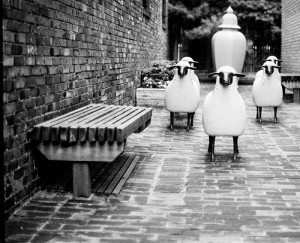 I had a discussion with an Aboriginal friend. I spoke of my pain about the disadvantage I’d seen on our travels to the Northern Territory. I spoke about my heartache at a special and amazing culture slowly slipping away before our eyes. I also spoke about my own struggles with being white and yet so desperately wanting to make a difference to the struggles of Indigenous Australians, worried that my passion would be perceived as misplaced arrogance. I struggled for 3 years from when we’d first travelled to the NT, up until recently to find a way.
I had a discussion with an Aboriginal friend. I spoke of my pain about the disadvantage I’d seen on our travels to the Northern Territory. I spoke about my heartache at a special and amazing culture slowly slipping away before our eyes. I also spoke about my own struggles with being white and yet so desperately wanting to make a difference to the struggles of Indigenous Australians, worried that my passion would be perceived as misplaced arrogance. I struggled for 3 years from when we’d first travelled to the NT, up until recently to find a way.
At a recent blogging conference I attended, there was a clear message, to find your purpose and your voice. I was also lucky to meet a lovely lady from World Vision Australia, and gain a little bit of an insight into the work they are doing within the Indigenous community, something I hadn’t really been aware of but am very keen to support.
Thinking back to that conversation with my friend, she had said to me, go out, and on your blog, share your stories. Your stories and your experiences can make a difference. If only one person truly hears your stories, if only one person changes their thinking on Indigenous Australia because of the stories you’ve shared, and the passion you have, then you’ve truly made a difference.
Let The Stories Begin
So, very soon, I’ll be standing naked, setting off around Australia, to find my simplicity, to find the stories that matter, to share them with you all. Because in the heart of this country there is a beauty. There is a beauty that is there in front of our eyes every day that we ignore. Things are not more important than that beauty, so I hope you find your way to find your inner essence, look past the things society enforces upon us, and I hope you join me on my journey.
Loreena x

by Loreena Walsh | Slider Features, Trip Planning
If you’ve made the decision to go for the big trip around Australia, or take an extended trip to explore some of the amazing places to see around Australia, then welcome, let’s take a look at some starting points for planning your big lap! That decision is the very start of an exciting journey. One of the most difficult parts of your trip is the budgeting, which starts long before you head off. We’re going to run you through a guide of the things you need to consider for your big trip. Like everything else when it comes to travelling Australia, the real expenses of your big lap will be highly variable and depend very much on your vehicle, accommodation and level of self sufficiency, so to start with, lets look at some of those decisions you’ll need to make.
Time Frame to Travel Australia:
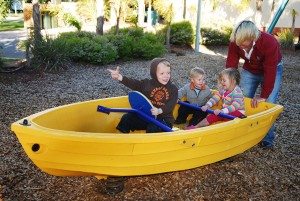 The first thing to decide about your trip around Australia is just how long you want to spend on the road. This will determine a whole lot of further decisions you’ll make about your holiday. Common time frames range from anywhere between a couple of weeks to a few years, and chances are, your trip will fall somewhere in there. Short Trips: Not only do shorter trips restrict the amount of travel you’ll be able to do, if you’re planning to see as much as you possibly can during your time on the road, you need to keep in mind that cramming lots of driving, attractions and accommodation into your trip will mean an increased short term budget.
The first thing to decide about your trip around Australia is just how long you want to spend on the road. This will determine a whole lot of further decisions you’ll make about your holiday. Common time frames range from anywhere between a couple of weeks to a few years, and chances are, your trip will fall somewhere in there. Short Trips: Not only do shorter trips restrict the amount of travel you’ll be able to do, if you’re planning to see as much as you possibly can during your time on the road, you need to keep in mind that cramming lots of driving, attractions and accommodation into your trip will mean an increased short term budget.
For longer term trips, itineraries can be planned to make the most of cheaper off peak pricing, self sufficient stays, and a fuel bill that is spread out over a longer period. So, a short trip that covers a lot of ground requires a larger up front budget, vs a longer trip covering the same ground. Longer trips offer pricing advantages, but this shouldn’t put you off.
Task:
- Write down your dream amount of time for your holiday, then write down the minimum time you know you have, work between these time frames to help with planning.
- Pencil in the time of year you’re planning to travel too, this will help with researching different regions and routes you can travel too (e.g- visiting the Northern Territory in January is extremely hot and right in the middle of the wet season).
Where to Travel in Australia?:
Deciding where to go on your Australian holiday is an exciting and important part of your planning process. With such a large, sparse country it can be a week of driving to get between destinations. For shorter trips, it’s a great idea to choose a general region or single route that you’re wanting to cover during your holiday.
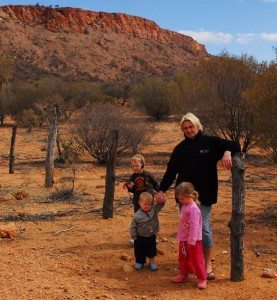 For instance, our first great Aussie roadtrip was the Stuart Highway, reaching from Darwin to Adelaide. Would you believe we covered the entire centre strip of Australia, as well as Kakadu in just 3 weeks! It’s true that by flying through a journey like that, you do miss some things, but if you’ve dreamed of doing something, do it anyway! You can always go back later (just like we are doing). For short trips, stick to a dedicated route, pre-plan which attractions you’d like to visit as well as accommodation if you can, this will help you budget ahead of time. Allow yourself some kind of slush fund though, because you’re bound to find fun and interesting things to do that aren’t on the original list.
For instance, our first great Aussie roadtrip was the Stuart Highway, reaching from Darwin to Adelaide. Would you believe we covered the entire centre strip of Australia, as well as Kakadu in just 3 weeks! It’s true that by flying through a journey like that, you do miss some things, but if you’ve dreamed of doing something, do it anyway! You can always go back later (just like we are doing). For short trips, stick to a dedicated route, pre-plan which attractions you’d like to visit as well as accommodation if you can, this will help you budget ahead of time. Allow yourself some kind of slush fund though, because you’re bound to find fun and interesting things to do that aren’t on the original list.
Remember, shorter trips over longer distances are often more expensive. Longer road trips will, of course, require a more expensive fuel bill if travelling over long distances, and depending on the car you’re driving or your choice of accommodation (more on those later) it may be restrictive. The best guide of longer travel is to have a rough idea of the regions you’re planning to visit, the best time to visit those places, and your expected accommodation expense. These things may change, and for long road trips, it’s often best not to overplan. Have a general guide to follow, but planning each day for a 12 month or even 3 month holiday is not only a drain, it can leave you feeling overwhelmed and disappointed.
Task:
- List your preferred travel regions and note down any climate issues, special events or offers that may be on at that time of year. Plot these regions/towns into approximate dates you might arrive/leave there and work within your expected time frame. Resist the urge to plot exact arrival and departure dates for the entire trip as some spontaneity is great for road trips. If you do need to book accommodation for busier regions, then do so, and adjust your itinerary between your destinations to still allow flexibility.
Choosing a Vehicle to Travel Australia:
Your fuel bill is going to be one of the largest components of your travel budget, this is a consideration when choosing which car to take with you on your roadtrip. While fuel costs are one consideration, they are not the only one. Accessibility to remote places, reliability, packing space and safety are amongst many other considerations you will need to keep in mind for long term car travel. There are many, many amazing places in Australia that you an visit in a small family car, for those looking to get into more adventurous territory, a four wheel drive of some sort is definitely recommended. Perhaps the most important information you will need about your vehicle if you’re going to be towing a camper or caravan are it’s tow limits. Thousands of holiday makers are towing illegally on Australian roads, and it’s not just about the law, it’s about safety too!
Task:
- If you’re planning to buy a new car, or upgrade your car for the trip, then head over to our previous post on how to choose a car to travel Australia. This will take you through all the considerations you need to make. If you’re heading off in the car you currently have, plan your trip accordingly to the abilities of your car.
Accommodation Choices for Travelling Australia.
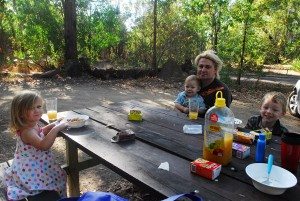 Wow, this is a huge subject to cover, and there’s so many possibilities for how you might choose to travel, and where you might stay. Your accommodation choices really come down to the following: Tent, camper, caravan, motorhome, or hotels/motels. That’s all the most popular ways to travel. So, now, the choice comes down to you. Here’s some pros and cons of these types of accommodation:
Wow, this is a huge subject to cover, and there’s so many possibilities for how you might choose to travel, and where you might stay. Your accommodation choices really come down to the following: Tent, camper, caravan, motorhome, or hotels/motels. That’s all the most popular ways to travel. So, now, the choice comes down to you. Here’s some pros and cons of these types of accommodation:
- Tents: Pro: Portable, cheap – Con: Comfort & Set up time.
- Campers: Pro: Portable, offroad options available – Con: Set up time vs full caravan, offroad version needed for some access spots.
- Caravans: Pro: Comfort, some offroad availalbe – Con: restricts access to some areas, cost can be prohibitive
- Motorhome: Pro: Comfort and no towing involved – Con: expensive to buy (although hire may be an option)
- Hotels/Motels: Pro: No towing – Con: Expensive and reliant on availability
Task:
- Decide what your budget it is, what types of destinations you’d like to cover on your trip (e.g- how remote you’d like to be), the VERY important consideration of the tow limitations of your vehicle if you’ll be towing and decide on a compromise. You may be able to purchase a second hand van for example to get the kind you need if you’re not able to afford a new one, you might decide to go with a tent because you’ll be doing lots of hard 4wd tracks. The choice is up to you, it’s just important to know why you’re making that choice and what to expect.
Budgeting When Travelling Australia.
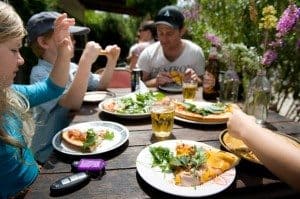 Just like all the points before this one, your trip is going to be personal, suited to your family, and therefore your budget is going to be different to ours for example. If you’re looking for a guide of sorts, then the most common number that gets thrown around is $100 a day.
Just like all the points before this one, your trip is going to be personal, suited to your family, and therefore your budget is going to be different to ours for example. If you’re looking for a guide of sorts, then the most common number that gets thrown around is $100 a day.
There are so many variables to consider when figuring out a budget, that it’s almost impossible to know exactly what your budget will be before you leave. With that being said however, there’s lots of ways to work out your approximate costs, by following some simple points:
Task:
- Figure out the number of nights you’ll be on the road for (for those travelling long term, you may want to just budget for a month. For those on a shorter trip, perhaps the entire trip budget might be what you want to know.)
- Taking into consideration the type of accommodation you’ve decided to go with, pre-plan as much as you can, approximately how many nights you’ll be staying in paid accommodation, and, to the best of your knowledge what the price of that accommodation will be. For example, we try to free camp as much as possible as a family, and if you’re self sufficient with your set up, this is a great way to save money. You may do the same, OR you might prefer caravan parks etc. For us, I would pre-plan for the month, take a look at the regions we’re going to and figure out how many nights we’ll have access to free camping, state forest or national park camping, and how many nights we might have to pay for a caravan park. Based on those estimations I can figure out the cost of the month for accommodation.
- For food, the only real change to your budget will be eating out vs cooking yourself. When you’re situated in an area with great facilities, food costs are likely lower, the more remote you are, the more expensive food often becomes. Sticking to staples and cooking yourself can help keep the budget lower. Eating out will drive the costs of food higher. Definitely go out and enjoy local eateries, just allocate yourself a budget to do so.
- To figure out your approximate fuel costs for your trip, a little bit of research goes a long way. Work out how much fuel your car uses per kilometre when it’s fully loaded. To do this, fill the tank and do a trip noting the amount of km’s you’ve travelled. Then fill the tank back up, noting the amount of litres it takes to fill the tank, these figures will allow you to work out the amount of litres of fuel you’ll be roughly using per kilometre of travel. This will allow you to budget approximate expenses between towns etc. It’s a good idea to tow your van or load up the car with extra weight to get as close to realistic as possible. Keep in mind that driving a little slower and having great tyres with correct tyre pressure will save you plenty of money in fuel!
So there you have it, your guide to getting started with the planning of your Aussie holiday. There’s so much to consider, but these points will give you a great start with figuring things out. Let us know if you have any questions or other ideas to add, we’d love to hear from you.

